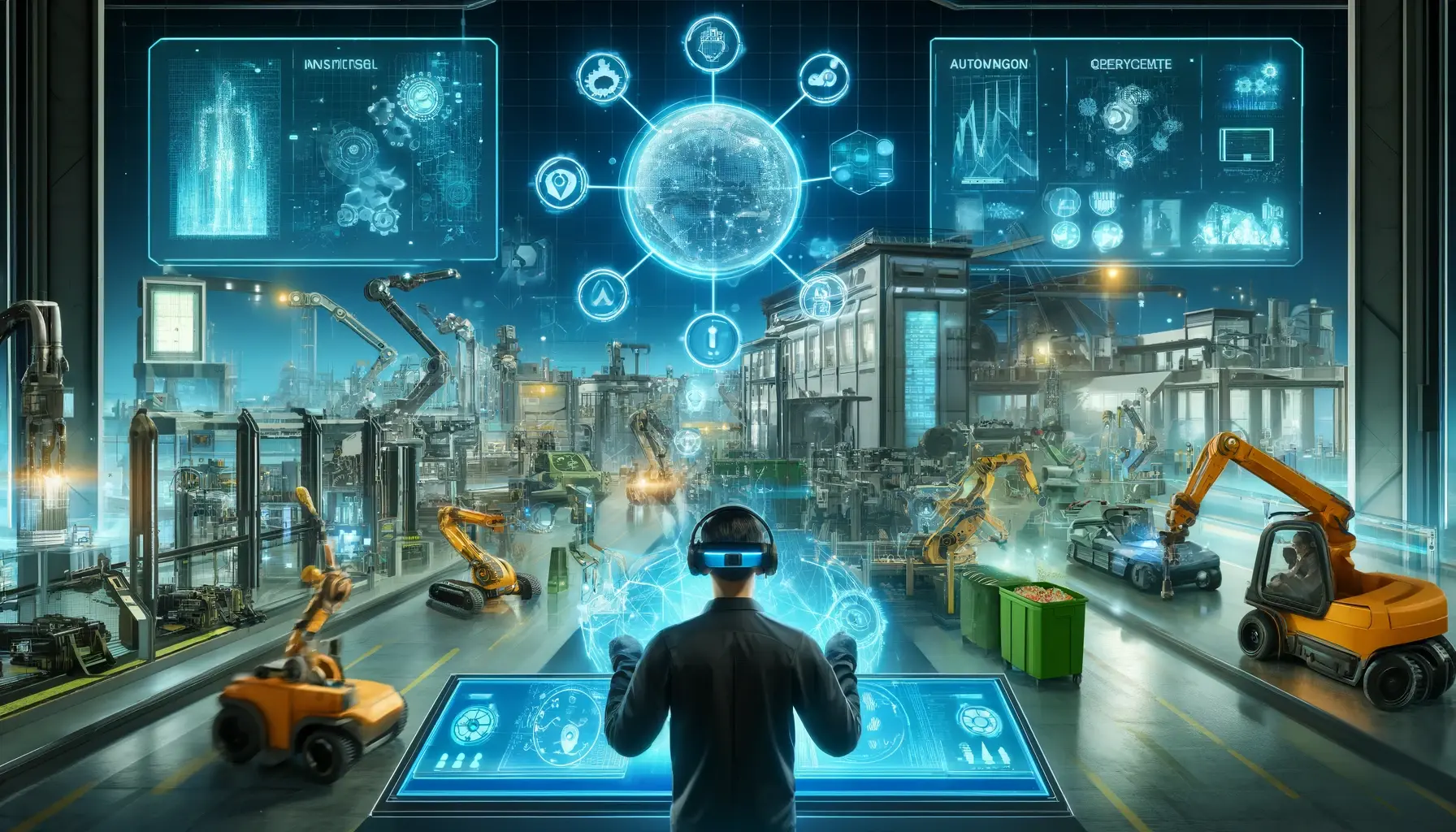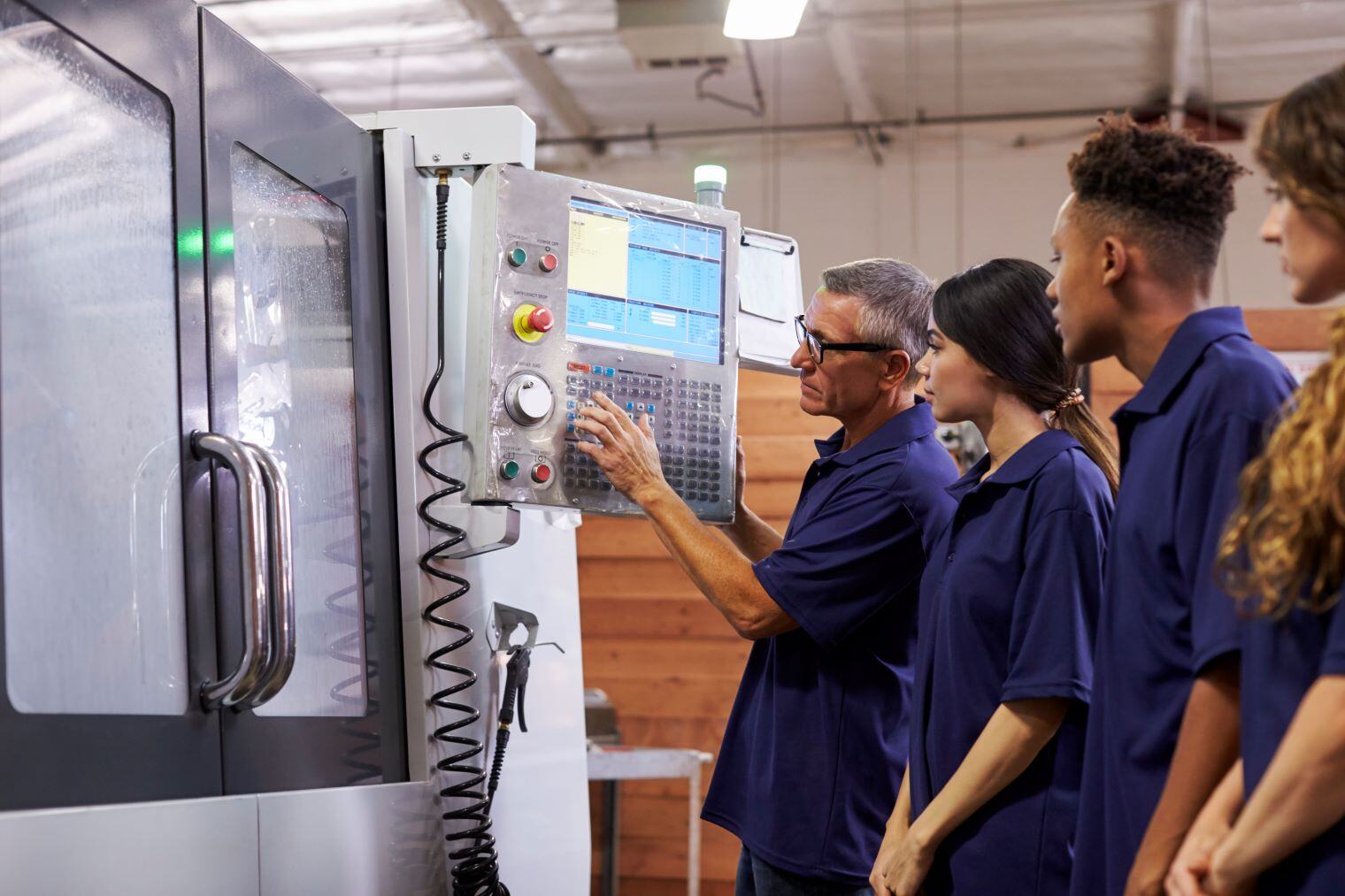Manufacturing Revolution 2025 - Smart Glasses, Generative AI, and Autonomous Factories

Post Categories
Ralph Hiddenburg, CSCP
The manufacturing sector is undergoing a seismic shift, propelled by groundbreaking technologies that are redefining the way we design, produce, and consume. As we approach 2025, five key trends are poised to disrupt the manufacturing landscape, ushering in a new era of efficiency, sustainability, and innovation.
- The Smart Glasses Revolution: Augmented Reality Goes Mainstream Imagine a world where your smartphone becomes obsolete, replaced by a sleek pair of smart glasses that seamlessly blends the digital and physical realms. This is the future envisioned by the smart glasses revolution, and it's poised to change the way we interact with technology forever.
At the forefront of this revolution is a new generation of augmented reality (AR) devices, powered by advanced processors that rival the computing power of modern smartphones. These smart glasses allow users to view the real world while overlaying digital information, creating an immersive and intuitive experience.
In the manufacturing sector, smart glasses are revolutionizing everything from product design to assembly line operations. Engineers can visualize 3D models in real-time, making on-the-fly adjustments and collaborating with remote teams as if they were in the same room. On the factory floor, workers can access step-by-step instructions, real-time data, and troubleshooting guides, all while keeping their hands free for delicate tasks.
As the technology matures, smart glasses are expected to become as ubiquitous as smartphones, potentially rendering traditional handheld devices obsolete. Leading tech giants like Apple, Google, and Microsoft are already investing heavily in this space, setting the stage for a battle that could reshape the entire consumer electronics industry.
- Generative AI: The OpenAI Revolution and Beyond The rise of generative AI, led by OpenAI's groundbreaking language models like ChatGPT and DALL-E, has sparked a revolution that is reverberating across industries. In the manufacturing sector, this technology is poised to transform everything from product design to process optimization.
Companies like Anthropic (with their AI model Claude), Google (with their rumored AI assistant Gemini), and even Apple, which reportedly shelved its autonomous vehicle project to focus on generative AI, are racing to develop cutting-edge AI systems capable of generating code, optimizing manufacturing processes, and even designing entirely new products.
Imagine a future where an AI assistant can not only understand natural language instructions but also generate machine code, create 3D models, and simulate entire production lines, identifying potential bottlenecks and inefficiencies. This level of automation and optimization could lead to unprecedented levels of efficiency, quality, and cost savings.
Moreover, generative AI is expected to democratize innovation by lowering the barriers to entry for small and medium-sized enterprises. With the ability to rapidly prototype and iterate on designs, even startups with limited resources could compete with industry giants, fostering a new era of disruption and competition.
- Autonomous Manufacturing: AI-Driven Factories and Robotic Workforces As artificial intelligence and robotics continue to advance, the concept of fully autonomous manufacturing facilities is becoming a reality. Companies like Tesla are leading the charge, implementing AI-driven systems that can optimize every aspect of the production process, from supply chain management to quality control.
At the heart of this trend is the convergence of generative AI, advanced robotics, and machine learning algorithms. Intelligent systems can analyze vast amounts of data, identify inefficiencies, and dynamically adjust production lines to maximize output and minimize waste. Robots, guided by these AI systems, can perform tasks with unparalleled precision and consistency, reducing the need for human intervention in hazardous or repetitive tasks.
One of the key advantages of autonomous manufacturing is the potential for cost savings. By leveraging AI and robotics, companies can minimize labor costs and optimize their operations for maximum efficiency. This could lead to a paradigm shift in the global manufacturing landscape, where the competitive advantage is no longer determined by access to low-cost labor but by the ability to implement cutting-edge autonomous systems.
Moreover, autonomous manufacturing could pave the way for mass customization, where products are tailored to individual customer preferences without sacrificing efficiency or cost-effectiveness. Imagine a future where you can design your dream car or personalize your electronics with just a few clicks, and have them manufactured on-demand by a fully autonomous factory.
- Intelligent Supply Chain and Logistics 4.0 In the era of on-demand manufacturing and mass customization, supply chain and logistics operations must adapt to meet the demands of a rapidly changing market. Enter Logistics 4.0, a fusion of advanced technologies that promise to revolutionize the way goods are transported, tracked, and delivered.
At the core of this trend is the integration of real-time data sharing, advanced analytics, and autonomous systems. From self-driving trucks and drones for last-mile delivery to blockchain-powered supply chain traceability, the logistics landscape is becoming smarter, more efficient, and more resilient.
By leveraging these technologies, manufacturers can achieve unprecedented levels of supply chain visibility, enabling them to predict and respond to disruptions proactively. Advanced analytics can identify patterns and trends, helping companies optimize inventory levels, reduce waste, and minimize stockouts.
Furthermore, the integration of autonomous systems, such as self-driving vehicles and automated warehouses, can streamline logistics operations, reducing the risk of human error and increasing throughput. This could lead to significant cost savings and improved delivery times, enhancing customer satisfaction and giving companies a competitive edge in the market.
- Cybersecurity and Digital Trust: Securing the Future of Manufacturing As manufacturing becomes increasingly digitized and interconnected, the need for robust cybersecurity measures and digital trust has never been more critical. Manufacturers are investing in cutting-edge solutions to protect their systems and data from cyber threats, safeguarding intellectual property, and ensuring the integrity of their operations.
One of the most promising technologies in this domain is blockchain. By leveraging the decentralized and immutable nature of blockchain, manufacturers can create secure and transparent supply chains, enabling end-to-end traceability and accountability. This not only enhances cybersecurity but also builds consumer trust by providing transparency into the entire manufacturing process.
Additionally, the adoption of secure-by-design principles, where cybersecurity is integrated from the ground up, is becoming increasingly important. AI-powered threat detection and response systems can identify and mitigate cyber threats in real-time, minimizing the risk of costly breaches and disruptions.
As the manufacturing sector becomes more connected and data-driven, digital trust will become a crucial differentiator. Companies that can demonstrate a commitment to cybersecurity and transparency will not only protect their operations but also gain a competitive advantage by building consumer confidence and trust in their products and services.
The manufacturing revolution of 2025 promises to be a transformative era, driven by groundbreaking technologies that will redefine the way we design, produce, and consume. From the immersive world of smart glasses and generative AI to autonomous factories and intelligent supply chains, the future of manufacturing is poised to be more efficient, sustainable, and customer-centric than ever before. As a decision-maker in the manufacturing sector, embracing these trends and staying ahead of the curve will be crucial to maintaining a competitive edge in the years to come.


